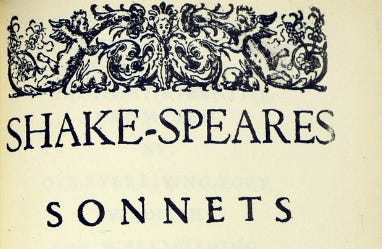The frequent hyphenation of Shakespeare’s name in early texts has not been satisfactorily explained. An analysis of texts available on EEBO (Early English Books Online) reveals that of the 58 quartos and octavos of plays published between 1593 and 1630, half of those not published anonymously (a third of the total number of texts) showed the author’s name as hyphenated:
Shakespeare - 19
Shakespere - 1
Shake-speare - 18
Shak-speare - 1
Anonymous - 19
The inclusion of poetry texts brings down the percentage of hyphenated occurrences, largely because Venus and Adonis and Lucrece (reprinted numerous times, with 14 and 6 extant editions, respectively, from this period) have the non-hyphenated form of the name appended to the dedication. Even so, the hyphenated form Shake-speare appears on 36% of all the poetry and drama texts attributed at the time of their publication to Shakespeare between 1593 and 1630. It appears most notably in the 1609 Sonnets, both on the title page (‘Shake-speares Sonnets neuer before imprinted’) and as a running header on every verso page. There are also four instances of the hyphenated form in the 1623 First Folio.
Randall McLeod’s suggestion that hyphenation is due to the need to separate the descenders of the long-k and long-s in kerning fonts (McLeod, 1981) does not stand up to scrutiny. In the case of the 1609 Sonnets, Shake-speare is printed in capitals throughout, suggesting hyphenation is a choice rather than a necessity. Analysis of the fonts used on the title pages of the plays reveals that twelve of the nineteen quartos authored by ‘Shake-speare’ do not use kerning forms of s and k, indicating that hyphenation is not for the reason McLeod suggests. In two quarto title pages, the name is broken over two lines, but in the remaining ten, neither font nor layout demands hyphenation. In addition, the five quartos by ‘Shakespeare’ display the non-hyphenated form in a kerning font, without the apparent need to hyphenate. In three of the five, an ascending long form of ‘s’ is used, but on the title pages of the 1603 quarto of Richard III, and the 1619 quarto of A Midsummer’s Night Dream, the descenders of both a long-k and long-s are printed without the separation device of a hyphen. In most cases, then, hyphenation cannot be explained by necessity.






